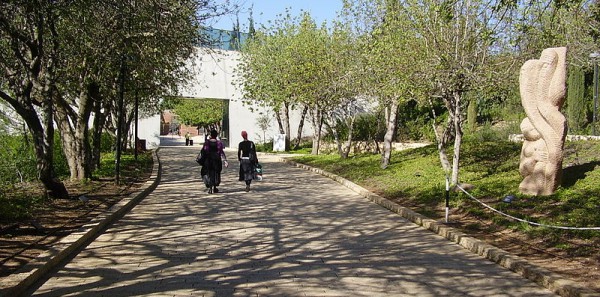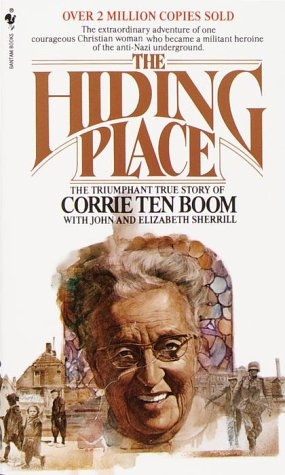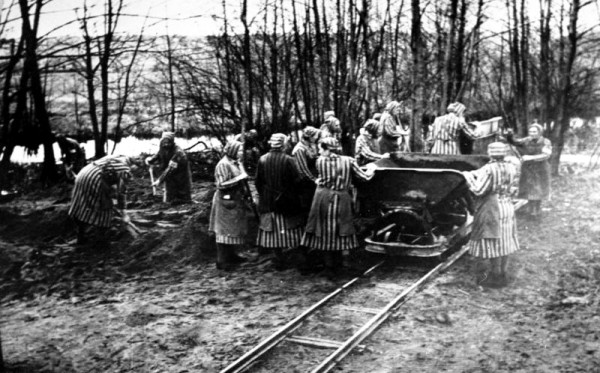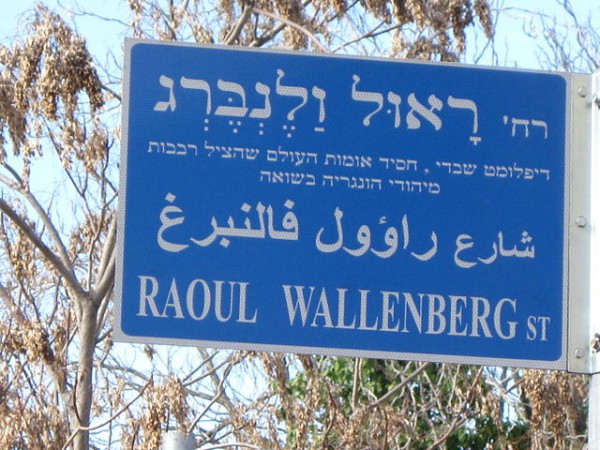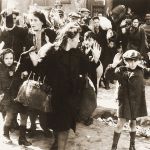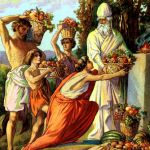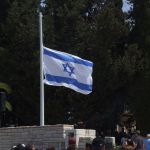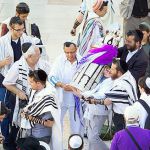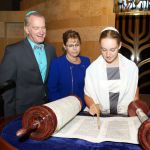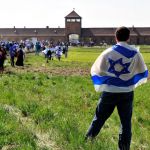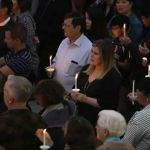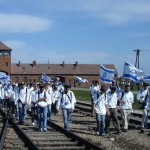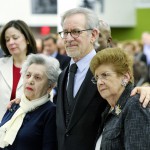“Rescue those being led away to death; hold back those staggering toward slaughter.” (Proverbs 24:11)
During World War II, most people idly stood by, indifferent to the fact that their Jewish neighbors were being rounded up and sent to death camps.
A remnant, however, did not follow the masses.
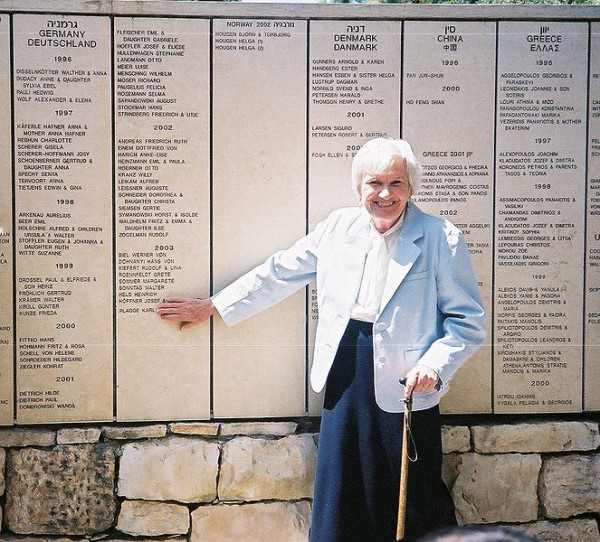
A Jewish survivor of the Holocaust visits the Garden of the Righteous Among the Nations in Jerusalem to honor the person who helped save her.
The Jewish death toll would have been far greater than six million by the time the camps were liberated in 1945 if it had not been for a courageous few who stood against the tide and risked their own lives to rescue as many Jews as they could.
In their honor, in 1953, the Knesset (Israeli Parliament) established Yad Vashem, Israel’s official memorial to the Jewish victims of the Holocaust.
Part of Yad Vashem’s responsibility is to also memorialize the Righteous among the Nations, the non-Jews who risked everything in order to protect Jews during the Holocaust.
Corrie ten Boom, Raoul Wallenberg and Antonin Kalina are among this extraordinary group of people.

The Ten Boom Family: Betsie, Nollie, Casper, Willem, Cornelia, and Corrie in 1900 before war ravaged Europe.
Corrie Ten Boom: The Hiding Place
“You can never learn that Christ [Messiah] is all you need, until Christ [Messiah] is all you have.” Corrie ten Boom
Corrie ten Boom was born in the Netherlands on April 15, 1892. The youngest of Casper and Cornelia ten Boom’s four children, she grew up in the small Dutch town of Haarlam.
The ten Boom’s nurtured a strong Christian home, which paved the way for Corrie accepting the Lord when she was five years old.
“I asked Jesus [Yeshua] to come into my heart and He came,” she said. “He didn’t say ‘you are too young.’ He came.”
This Christian family also happened to believe that the Jews are God’s Chosen People, which paved the way for Corrie’s extraordinary acts of love toward them throughout her life.
As adults, Corrie and her eldest sister Betsie lived on with their father after their mother died and their siblings married.
Corrie did charitable work helping disabled children, and joined her father in his watch-making and repair shop. She became the first licensed woman watchmaker in Holland.
Later, she would use this job as a cover for making contact with Dutch resistance workers, who helped her obtain ration books and build a hiding place for those fleeing Nazi persecution.
Corrie was 48-years-old and unmarried when Germany invaded the Netherlands in 1940.
Horrified at the Nazi persecution of the Dutch Jews, she and her family put aside their peaceful lives and began harboring Jewish refugees in their home.
As they became more involved in the Dutch underground, the family built a secret area off of Corrie’s bedroom in which Jews and members of the Dutch resistance hid during the Nazi SS raids.
The title of Corrie’s autobiography The Hiding Place refers to this special room.
When an informant betrayed them, the Gestapo raided the home. Corrie and her entire family plus acquaintances attending a prayer meeting in their living room—about 30 people in total—were arrested on February 28, 1944.
Although they were taken to the Scheveningen penitentiary near The Hague, they did not give up the six people who were hiding in the secret room during the raid.
Those they had been sheltering were rescued, but Corrie’s father became ill and died in Scheveningen ten days after the arrest. Corrie and Betsie were deported to the infamously harsh concentration camp called Ravensbruck in Germany. Betsie died there in December 1944.
Just a couple days later, due to a clerical error, Corrie was miraculously handed discharge papers on December 28, 1944. But only a week after her release, all Ravensbruck’s female prisoners in her age group were murdered in the gas chambers.
Corrie dedicated the rest of her life to teaching about forgiveness and God’s love, while also leading people to Yeshua HaMashiach (Jesus the Messiah) as their personal Savior.
The Yad Vashem Remembrance Authority recognized her efforts to hide Jews during the Holocaust and honored her as one of the Righteous Among the Nations on December 12, 1967.
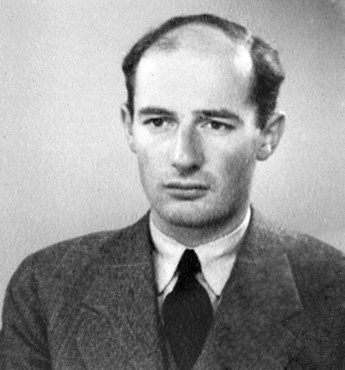
Raoul Wallenberg courageously rescued up to 100,000 Jews in Nazi-occupied Hungary during the Holocaust.
Raoul Wallenberg: The Swedish Rescuer in Hungary Defies Germany
“I will never be able to go back to Sweden without knowing inside myself that I’d done all a man could do to save as many Jews as possible.” Raoul Wallenberg
Born in 1912, Raoul Wallenberg came from a prominent Swedish family of bankers, diplomats and industrialists.
Although he had studied architecture at the University of Michigan in the United States, jobs in architecture were in short supply, so his grandfather arranged a position for him in a bank in what was then called Palestine (Israel).
There in Israel, in 1935, he heard the stories of Jews who had escaped Nazi Germany and kept those horrid accounts close to his heart.
A year later, he moved back to Sweden and through his uncle, he eventually became the business partner of Koloman Lauer, a Hungarian Jew and director of a food import and export company. In that capacity, he personally witnessed the Nazi policies he had only heard about while in Israel.
After the Germans occupied Hungary on March 19, 1944, the Swedish government joined with the American War Refugee Board to protect Hungary’s Jews.
Wallenberg was sent to Budapest, Hungary in July 1944 as secretary to the Swedish Embassy. There, he was given a list of names of Jews assigned to him for assistance and 650 protective passports that were to be issued to those who had a connection to Sweden.
But his mission extended far beyond this assignment.
In the autumn of 1944, the Arrow Cross Party took power and overtly killed Jews in the streets, throwing them in the Danube River. Jews were also shot at the waters edge so their bodies would be carried away by the current.
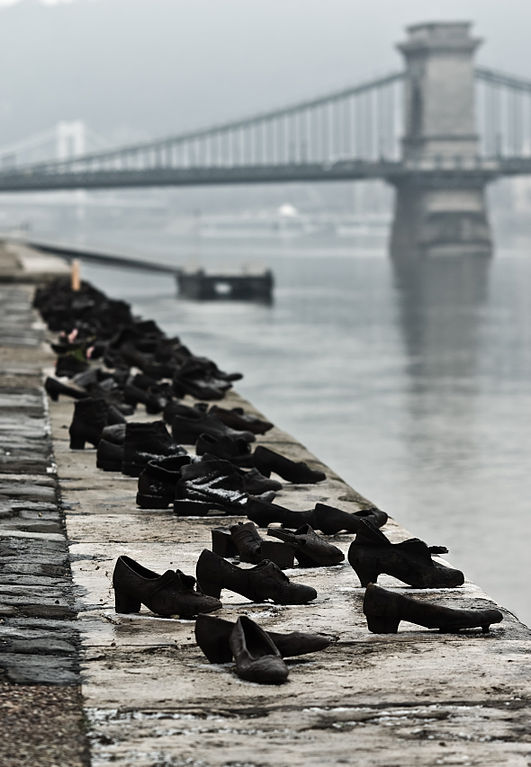
The Shoes of the Danube Promenade memorial in Budapest, Hungary honors the Jews who were killed by the Nazis and Arrow Cross Party during WWII. The Jewish People were ordered to removed their shoes before they were shot into the Danube.
As the situation rapidly deteriorated, Wallenberg not only issued thousands of protective letters indiscriminately, he also bought real estate properties and declared them to be Swedish territory protected by diplomatic immunity.
These became safe houses, which at one point sheltered over 15,000 Jews.
When Adolf Eichmann, ordered the immediate deportation of all Hungarian Jews, Wallenberg did not give up.
In one instance, at great danger to himself, Wallenberg boarded a cattle train carrying Jews bound for Auschwitz. In describing what happened, Sandor Ardai, one of his drivers, summed up his determination to save them:
He climbed up on the roof of the train and began handing in protective passes through the doors which were not yet sealed. He ignored orders from the Germans for him to get down, then the Arrow Cross men began shooting and shouting at him to go away. He ignored them… I believe the Arrow Cross men deliberately aimed over his head… I think this is what they did because they were so impressed by his courage.
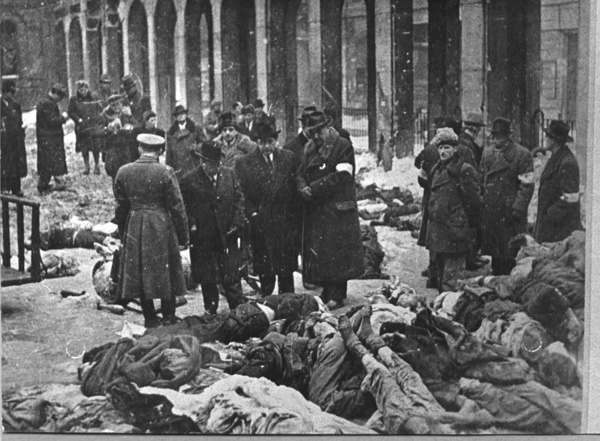
This horrific photograph of the Holocaust shows Jewish victims of Arrow Cross Party men in the court of the Dohany Street Synagogue, also known as The Great Synagogue in Budapest.
The driver added, “ I don’t remember exactly how many, but he saved dozens off that train, and the Germans and Arrow Cross were so dumbfounded they let him get away with it.”
In total, Raoul Wallenberg is thought to have rescued from tens of thousands up to a 100,000 Jews.
The exact circumstances of his death are not known as he disappeared after being called to appear before Soviet authorities in 1945.
Yad Vashem recognized Raoul Wallenberg as Righteous Among the Nations on November 26, 1963.
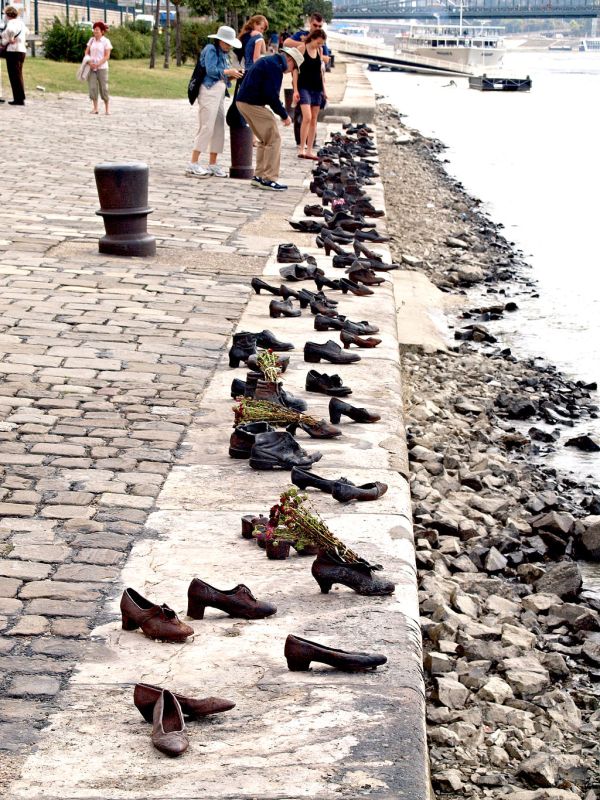
Visitors to the Shoes on the Danube Promenade memorial place flowers into the iron shoes attached to the stone embankment in memory of the Jewish People who perished there.
Antonin Kalina: Kinderblock 66
“I believe in people. It was necessary to believe in oneself, and those who lost that belief were lost.” Antonin Kalina
Antonin Kalina was born in 1902 in the Czech town of Trebic.
Not much is known of his life other than he helped to save hundreds of Jewish boys while he was a prisoner in the Buchenwald concentration camp near Weimar, in Germany.
After he was imprisoned by the Nazis in 1939 for being a communist operative, Kalina rose in the ranks of the underground movement that controlled the day-to-day management of the Buchenwald camp.
Although Buchenwald had been set up in 1937 to house opponents of the Nazi regime, as the Holocaust got under way, a great many Jewish boys between the ages of 12 and 16 were also sent there.
Together with other prisoners, Kalina decided it was necessary to protect these youngsters from the wanton brutality of the Nazis and, therefore, he put them in “block 66.”
This area became known as the kinderblock (kinder is German for “children”), led by Kalina as the block elder. Located some distance from the main camp, it was so filthy and infested that the SS did not care much to see what happened there.
At tremendous risk to his own life, Kalina saw to it that the boys lived in better conditions, received extra food and blankets, and were protected from the deadly camp work.
In the final days of the war, the Nazis wanted to eradicate the Jews with a death march. Kalina refused to comply and changed the Jewish boys’ badges to identify them as Christians.
When the Nazis came knocking, he told them no Jews were left.
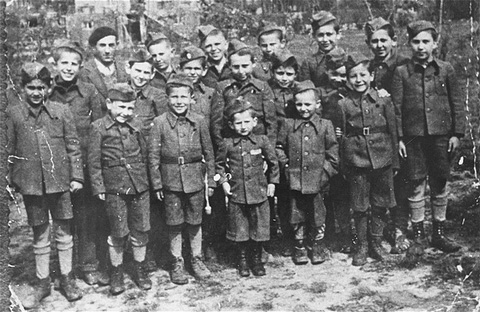
Buchenwald children after their liberation wearing outfits made from the uniforms of German soldiers
When the Allies freed Buchenwald on April 11, 1945, over 900 Jewish boys were set free, and they lifted Kalina onto their shoulders.
Kalina returned to Czechoslovakia once the war was over, seldom if ever mentioning his role in saving these boys.
Perhaps we would not have heard of him, if it were not for the efforts of the International Raoul Wallenberg Foundation, which released a film about this hero and the boys he saved called Kinderblock 66: Return to Buchenwald.
Yad Vashem honored Kalina with the Righteous Among the Nations on July 11, 2012.
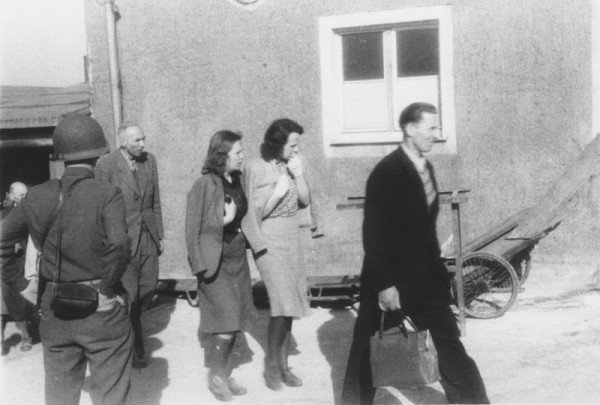
After the liberation of Buchenwald concentration camp: an American soldier stands guard as German civilians are confronted with the piles of corpses outside of Buchenwald’s crematorium.
The Righteous Among the Nations
“Whoever dwells in the shelter of the Most High will rest in the shadow of the Almighty.” (Psalm 91:1)
Over, 23,000 names of men and women from around the globe have been carved on the Wall of Honor in Yad Vashem’s Garden of the Righteous in Jerusalem.
They remind us that we can be grateful and know that even when we don’t understand what is happening, God watches over His people.
We may not know if we shall be called upon to risk our lives for another person, but we can ask God for the strength to be willing to do so.
“Blessed are those who hunger and thirst for righteousness, for they will be filled.” (Matthew 5:6)




